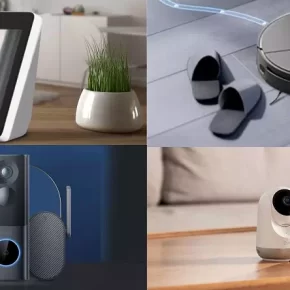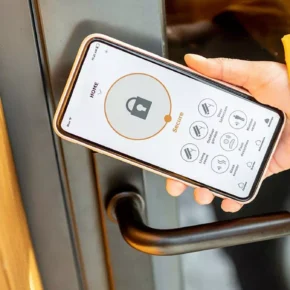In today’s world, technology is becoming an integral part of everyday life, making our homes smarter and more convenient. One of these innovations is smart heating, which allows you to control the temperature in the house remotely.
This is not only convenient, but also helps to reduce energy costs and provide comfortable conditions at any time of the year.
In this article, we will look at how smart heating systems work, their advantages and the main tips for choosing.
1. What is smart heating?
Smart heating is a system that allows you to control the temperature in the house using special devices and mobile applications. Such systems include smart thermostats , temperature sensors, as well as automation systems that provide control over the climate at home. With the help of a smartphone or tablet, you can change the heating settings, even when you are far from home.
Smart devices that you will need to organize smart heating :



2. How does the smart heating system work?
The main components of the smart heating system include:
- Smart thermostat : a device that allows you to adjust the temperature of rooms automatically or manually using a mobile application.
- Temperature sensors : installed in different rooms to monitor the actual temperature and ensure the optimal level of heat in each room.
- Mobile application : with its help, you can control the operation of thermostats, set heating or cooling schedules, and monitor energy consumption.
The system can be integrated with other elements of the “smart home”, for example, with lighting or ventilation, to create a fully automated environment.
3. Advantages of smart heating

3.1. Energy saving
Thanks to the ability to control the temperature from a distance, you can significantly reduce heating costs. For example, lowering the temperature when no one is home and raising it before you return. This allows you to avoid unnecessary energy costs and maintain a comfortable climate.
3.2. Ease of use
With the help of a mobile application, you can monitor the temperature from anywhere in the world. This is especially convenient for those who often travel or work outside the home. You can prepare the house in advance for your return by providing the ideal microclimate.
3.3. Intelligent algorithms
Smart thermostats can learn your habits and automatically adjust heating settings based on the time of day, the weather, and even your preferences. For example, they can lower the temperature at night for better sleep and raise it in the morning.
3.4. Distributed control
Ability to set different temperatures for different rooms. This allows you to set the optimal heating mode for each zone, ensuring maximum comfort for all family members.
4. How to choose a smart heating system?

4.1. Compatibility
Before choosing a system, make sure that it is compatible with your existing heating equipment – whether it is radiators, underfloor heating or other types of heaters.
4.2. Functionality of thermostats
Choose the thermostat with the functions that suit you best. Some models offer additional features such as voice control via Google Assistant or Amazon Alexa , integration with other smart home devices and support for geolocation functions to automatically adjust the temperature when you are at home or away.
4.3. Ease of installation
It is important to choose a system that easily integrates with your home. Many modern systems do not require complex installation and can be installed independently in a few hours.
4.4. Safety and reliability
Make sure the system provides a secure connection for remote control and is securely protected from external threats.
5. Popular brands of smart thermostats
There are many smart heating systems on the market. Among the most popular:
- Nest : one of the most famous systems that offers intelligent functions and simple management.
- Honeywell : offers a wide range of smart heating solutions that can be integrated with other smart home systems.
- Ecobee : thermostats of this brand provide high accuracy of temperature regulation and have a smart learning function.
6. Tips for effective use of smart heating
- Use a schedule : Set up an automatic heating schedule based on your schedule for the day.
- Control the temperature from a distance : with the help of the application, you can change the settings even when you are not at home.
- Maintain an optimal level of warmth : too high or too low a temperature can negatively affect your comfort and health, so it is important to find a balance.
Smart heating systems not only provide comfort, but also help save energy and reduce heating costs. Thanks to the possibility of remote control and intelligent functions, you will be able to set the perfect microclimate in your home, regardless of where you are. By choosing the right system and following the advice on its use, you will create the most comfortable conditions for yourself and your family.











